|
Barbacoa |
||
|
The first thing to understand about barbacoa is that it is not American-style barbeque. Some food historians believe that barbeque is a derivative of barbacoa. Nevertheless, the cooking methods are different, and the final product has a different texture and flavor. Barbeque is cooked by a dry heat, while barbacoa is a wet process with steam. The spices are somewhat different with the biggest difference being the use of maguey leaves in cooking the barbacoa. It's a bit of a misnomer to refer to America-style barbecue because there are so many different styles -- Texas, Memphis, Kansas City, North Carolina, etc. Likewise, in México barbacoa varies by region, even by cook. What Adriana is making today follows her family's traditional recipe, many generations old with both beef and pork.. |
||
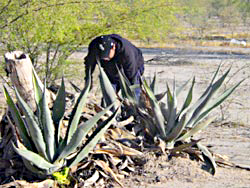 |
Our barbacoa story begins with Nery and me taking another desert adventure in search of a maguey plant that wants to give us some of its leaves. With machete in hand, Nery trims a few leaves, the loss of which will not harm the plant. In the USA, the maguey is usually called a century plant. It's a cousin of the Tequila blue agave.
The edges of the leaves have sharp thorns which Adriana removes before placing the leaves on the stove to soften, so they will be pliable enough to wrap around the meat. The spices are bay leaves, marjoram, thyme and salt. The meats are beef neck and pork hock. You can use any meat you want. Goat is often used.
A bowl inside a large steamer is lined with the softened maguey leaves. Then the four pieces of meat are loaded and sprinkled with the spices. |
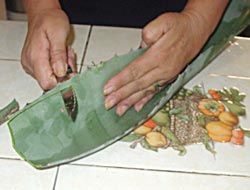 |
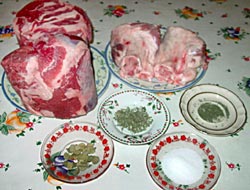 |
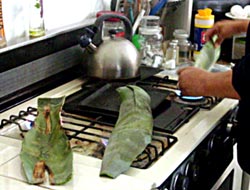 |
|
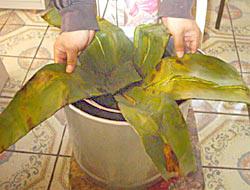 |
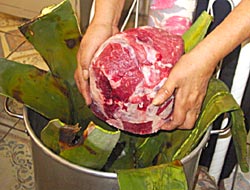 |
|
 |
The leaves are folded over the meat, so the meat is completely wrapped by the maguey leaves.
With the lid in place, Nery lifts steamer to the stove for four hours of steaming. |
 |
|
Four hours later |
||
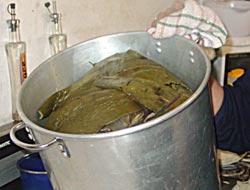 |
After she cut off the maguey leaves, Adriana began lifting the meat out. The pork hock came out almost intact.
The beef had definitely fallen off the bones.
We made tacos and stuffed ourselves. To accompany the meat in the tacos, there were two kinds of tomatillo-based salsas, chopped onions and cilantro, and limes. |
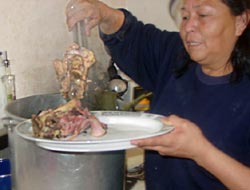 |
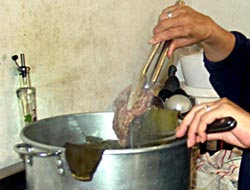 |
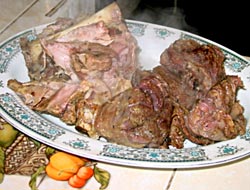 |
|
|
Both meats were very good, but I liked the pork better. Of course, I always like pork over beef. I was pleased when Adriana gave me some of each to take home. |
||
|
The cut maguey leaves should be allowed to rest for about a week before using. Otherwise they may impart a bitter taste to the meat. |
||
| If you wish to write to Adriana Rosales you may send an e-mail to AdrianaR@rollybrook.com | ||
| Cooking Directory | ||